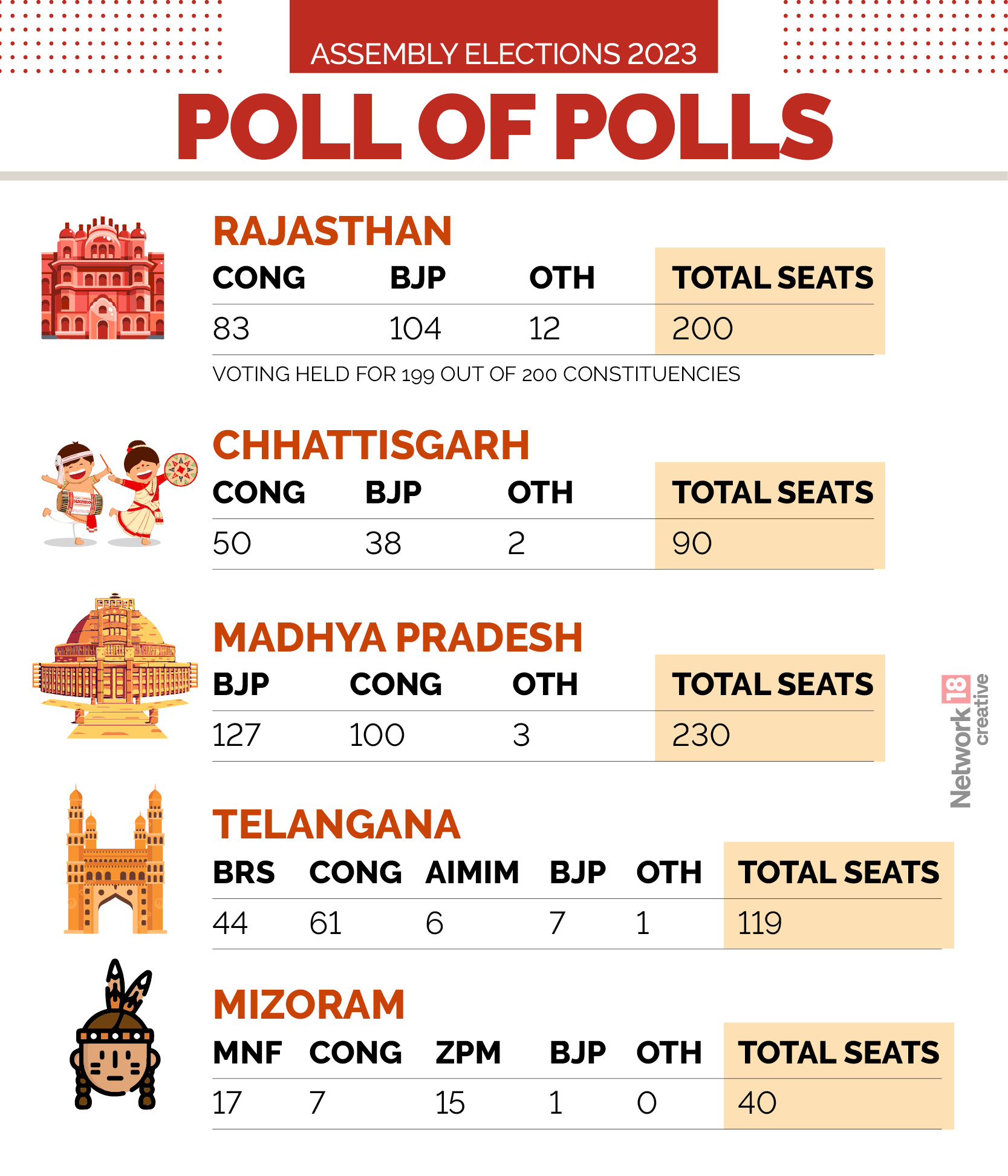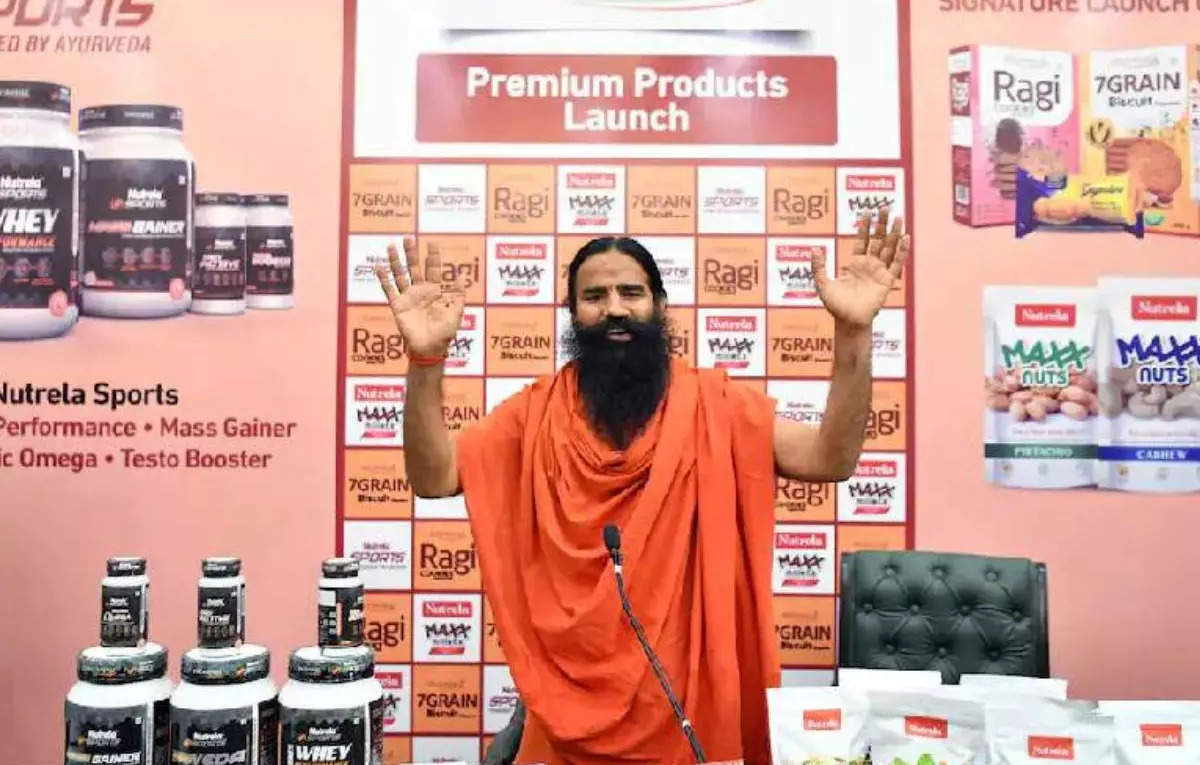Exit polls have been a critical weathervane in the political theatre that has characterised key poll contests ever since the American pollster Warren Mitofsky conducted the first one in 1967 for the Kentucky governor’s contest. Individual polls may get it wrong sometimes, for sure, but a wider poll of exit polls – averaging out the findings of all key pollsters — more often than not, does provide a sense of the direction in which the people’s mood is moving.
So, what does the poll of exit polls – showing a possible 2-2 draw between Congress and BJP — in key Hindi heartland states and Telangana mean for national politics? If these numbers (see chart) hold on results day, here are five key takeaways:
• Brand Modi still delivering, even in state contests: A BJP victory in Rajasthan (which would be part of the state’s historical pattern of replacing incumbents) and a tight margin call in Madhya Pradesh (going against the grain of 20 years of anti-incumbency) would first and foremost indicate that Prime Minister Modi’s brand appeal retains its electoral potency, even in local contests.
Remember that in both Rajasthan and MP, the party made it clear that it has no CM face – despite the presence of its traditional satraps, Vasundhara Raje and Shivraj Singh Chauhan. The Prime Minister – or ‘Modi ki guarantee’ as the party’s poll slogan put it – has been at the centre of the party’s campaign in both states, to paper over the internal fissures created by the party’s effort to effect a generational change in both states.
• BJP’s Core Voter Base and Last Mile Party Machinery Remain Strong in Hindi Heartland: After two decades of incumbency in Madhya Pradesh, few gave BJP a chance even three months ago. Despite that, a BJP resurgence in the state showcases the inherent strengths of the party’s cadre.
MP was the original bastion of the Sangh, long before even Gujarat. If the polls are right, then they indicate that BJP managed to overcome internal differences and galvanise its core cadres, in sharp contrast to what happened in Karnataka just three months ago. To a lesser extent, this is true in Rajasthan as well.
• Jury Still Out on Mandal 2.0 and Caste Survey: The runup to these assembly polls was animated by Rahul Gandhi’s call for a nationwide caste census. The opposition was betting big on this gambit as a way of cutting through the BJP’s Hindutva plank and to fracture the new Other Backwards Classes (OBC) base that has powered the party’s post-2014 victories in the Modi era.
This seems to have had limited impact on the ground. Almost one-third of MP’s 230 assembly seats, for example, are OBC-dominated. If the exit poll average in two key Hindi heartland battleground states is right, it indicates a lukewarm response to what many saw a game-changing super weapon to combat the BJP’s poll juggernaut ahead of the 2024 polls.
• Congress’s Telangana Surge Indicates Emergence of a Different South India Model: The revival of the Congress in Telangana resurrects a core party bastion that had simply crumbled away in the aftermath of the new state’s formation in 2014. After the party’s Karnataka sweep earlier this year, the Telangana surge hands the Congress a second southern state, with a strong economic and financial base.
Like Karnataka, the Congress benefitted from a strong local leadership in Telangana. And it hugely benefitted from defections by many leaders who began to see it as a viable challenger in Hyderabad after the Karnataka victory. The party’s Telangana campaign essentially followed the same template as Karnataka and voters moved to it after it became clear that it was a serious challenger to the status quo. If the exit polls are right, then it also indicates a significant movement of minority votes in Telangana to Congress from the BRS.
• Women Voters Have Changed the Game: These elections have once again underscored the crucial role of the Mahila-factor. In MP, for instance 18.3 lakh women voters cast their ballots, 2% more than last time. Women ‘labharthees’ clearly played a pivotal role in the BJP’s resurgence, driven by new welfare measures like the ‘Ladli Behna’ [Beloved Sister] scheme that put money directly in their pockets.
Women voters have been crucial to the BJP’s poll advances since 2014 in north India, on the back of welfare schemes and last-mile delivery with direct-benefit-transfers. Their rise has been a game-changer overturning traditional politics. The higher turnout of women voters is also intrinsically linked to the creation of a new ‘labharthee’ class’ and the rise of a new kind of competitive welfare politics. This trend is here to stay. As these elections showed, no major party can afford to ignore this.
Finally, it is important to remember that BJP had lost all these 4 key state assembly contests in December 2018. Yet, just a few months later in the 2019 national polls, it swept Rajasthan, MP and Chhattisgarh and made inroads in Telangana. Voters often vote differently in state (where local issues matter more) and national contests.
Yet, five years later, the fact that BJP has managed to get ahead now in two assembly contests, indicates that it remains in pole position on the road to 2024. The Congress has cause to celebrate with its Telangana resurgence, for sure. However, in the Hindi heartland, if these polls hold, it still faces a huge uphill battle up ahead in head-to-head contests with the BJP in 2024.

































